Entrepreneur Magazine once called me a “loud digital marketer.”
Ha!
I’m from New York City.
Where I’m from, people talk loud.
And, we talk with our hands, too.
It’s no surprise…
If you want to cut through the noise, you gotta make people listen.
That’s why I love these 21 hand gestures.
But hand gestures are not just useful for surviving in NYC 😉
Hand gestures can help you communicate better…
…when you talk to people.
…when you give a presentation at work.
…when you’re giving a speech.
That’s why I wanted to show you how to use some of the most powerful hand gestures.
Here’s what you’ll learn in this post:
- Why hand gestures are so important
- What hand gestures say about you
- How can hand gestures help you become a better communicator?
- The 21 hand gestures you should use
- How to use hand gestures when you’re speaking in public (or giving a presentation)
Why Hand Gestures Are Important
Many things make up your body language:
Posture, eye-contact, facial expressions, and…
Body movement.
(Also called “Kinesics”)
This it the category hand gestures fall into.
A hand gesture is whenever you move your hand or head to express or emphasize an idea. And this is an important part of your overall body language.
Here’s why:
In a study by researchers from the University of Rome (Italians talk with their hands as much as we New Yorkers do hehe…) point out 4 main reasons hand gestures are important:
- Hand gestures can help you describe what you’re talking about, both literally (e.g. when you talk about drawing a circle, you can motion a circle with your hand) and metaphorically (e.g. you could motion a circle with your hand to say “everybody”)
- Hand gestures can help you point to people and things in your surroundings (e.g. pointing at an object while you say “look at that”)
- Hand gestures can help you add emphasis and structure when you talk (e.g. showing numbers when you count, “1, 2, 3…”)
- Hand gestures give clues about your emotional state. These gestures are not always connected to what you’re saying (e.g. are you confident?, are you lying?, are you anxious?)
What the study also found is that hand gesture are extremely RELIABLE. That is, in general, people seem to agree what hand gestures mean.
It makes sense, too.
Babies learn to communicate with gestures before they say a single word.
(But be careful… Different gestures can mean different things in different places. More on that later.)
Hand gestures even help us learn.
The thing is, often we’re not aware of our gestures. Or we don’t know which gestures to use. In general, people just have less control over their non-verbal communication.
But that’s exactly why I believe hand gestures are so important.
You should pay attention to other people’s gestures because you can pick up lots of clues. Are they lying? Are they unsure? Are they trustworthy?
And of course…
For you as a communicator, it means you should be aware of the gestures you use while you talk.
In fact, you should use them to communicate BETTER…
What Hand Gestures Say About You
Body language and gestures, in particular, say a lot about you.
They affect how people perceive you.
The general rule you should remember (according to science):
The more space you take up the more power and confidence you communicate.
So…
When you take up a lot of space and make big gestures, you’ll be perceived as more confident.
It’s because confident people speak with more conviction. They’re more involved. So, when they speak they use their hands more.
With that said, Vanessa Edwards makes a good point:
There is such a thing as TOO MUCH gesturing.
You should stay “in the box” of appropriate hand gestures:
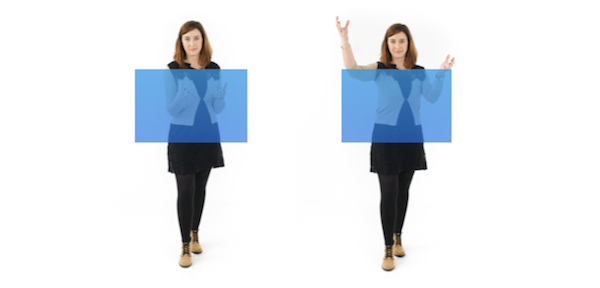
Stay inside the box with your gestures.
Stay inside the box.
Otherwise, you risk getting into “jazz hands” territory, as she puts it.
The problem with that?
It’s distracting.
Now…
Whether you’re aware of it or not, you’re ALREADY communicating with your hands, as psychologist Susan Weinschenk, Ph.D. points out.
The general position of your hands reveals a lot of information about you.
But what exactly?
Here’s what the position of your hands says about you:
- In general, “open hands” mean honesty. Basically, whenever you expose your palms it shows that you aren’t hiding anything (as opposed to hiding your hands in your pockets).
- The position of your palms matters in another way, too. When you make a request, turning your palms up means you’re “asking for a favor.” Make the same request with your palms down, and it comes off more like “making a demand” or “giving an order.”
- When you hold your hands close to your heart, it also means that you’re being sincere (“I really mean it!”)
- Politicians often use handshakes to show their power. Instead of shaking hands vertically, they try to put their hand on top. And if someone does it to them, they put their other hand on top. It can get really weird…
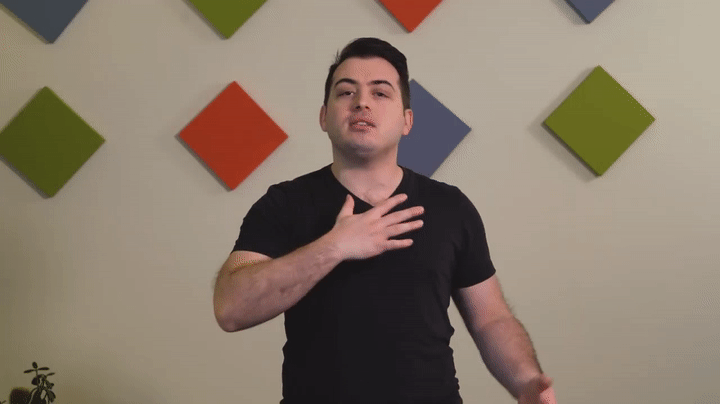
Those are the more general rules of what the movement and position of your hands say about you.
But how can you use gestures more purposefully?
Let’s talk about…
How Hand Gestures Help You Communicate Better
Maybe you’ve heard that…
“Words are only 7% of communication”
Well, it’s a myth.
And when you think about it…It would also be pretty strange if it was true.
LOL.
This isn’t to say non-verbal communication is NOT important. But that particular stat is just wrong.
You see, hand gestures don’t REPLACE what you say. They EMPHASIZE what you say.
Most importantly…
Hand gestures make people pay attention.
A study led by neuroscientist Spencer Kelly found that…
…gestures – more than actions – appear to make people pay attention to the acoustics of speech. When we see a gesture, our auditory system expects to also hear speech.
And there’s more research to back it up.
Gestures can increase the amount of information you can get across by as much as 60%:
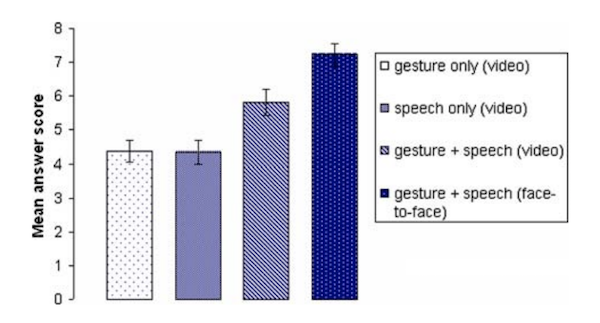
Gestures make people listen.
As you can see from the graph, gestures communicated significantly more information.
Especially when you meet people face-to-face (which, by the way, you should do WAY more often if you don’t like being rejected).
So, this is how hand gestures will make you more persuasive overall. It makes sense intuitively, too.
Often when you read a transcript of an unedited speech it reads horribly. Why? Because when you talk, you can get away with more sloppy language…
Lots of umms and ahhs. Incomplete sentences. And, other weird mistakes that would never fly in a written text.
But hand gestures can make up for some of this, says body language expert Carol Kinsey Goman:
“Gesture is really linked to speech, and gesturing while you talk can really power up your thinking (…) Gesturing can help people form clearer thoughts, speak in tighter sentences and use more declarative language.”
Most importantly…
Hand gestures can increase your impact when you’re having an important conversation, making a speech, or giving a presentation.
Here are numbers to prove it. When Science of People analyzed hand gestures in TED Talks they found that:
- The least popular presenters used an average of 272 hand gestures
- The most popular presenters used an average of 465 hand gestures (almost double!)
So, it seems clear:
Effective communicators use MORE hand gestures.
The question now is, WHICH gestures should you use?
And when should you use them?
The 21 Most Important Hand Gestures: What They Mean and When You Should Use Them (With Pictures)
I’ll list the most important hand gestures with pictures below.
But first, I want to share my favorite gestures. I use them in my videos. And I use them every day when I talk to people.
Watch the video here:
(If you like the video, make sure you subscribe to my YouTube channel.)
Now… I’ve already covered some of the following gestures in the video. But here’s the full list of gestures you can use in your communication.
Most of the gestures don’t need much explanation, either…
Listing (“One, Two, Three…”)
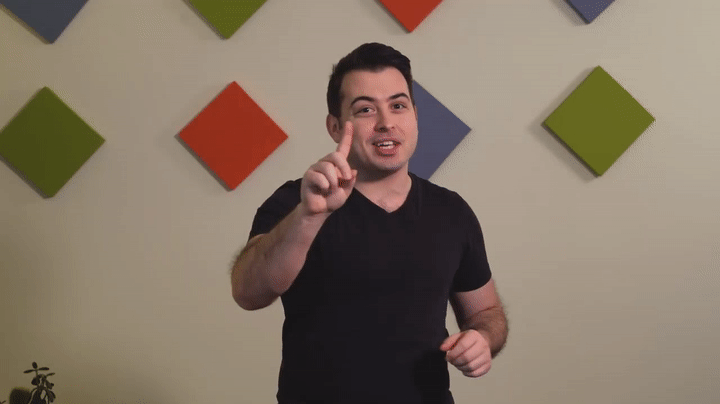
Whenever you list or count something, use a hand gesture to make the point.
It helps structure your message.
And it creates some curiosity. People will want to hear your second, third, etc. point when you count along with your hands.
Contrasting (“This or That”)
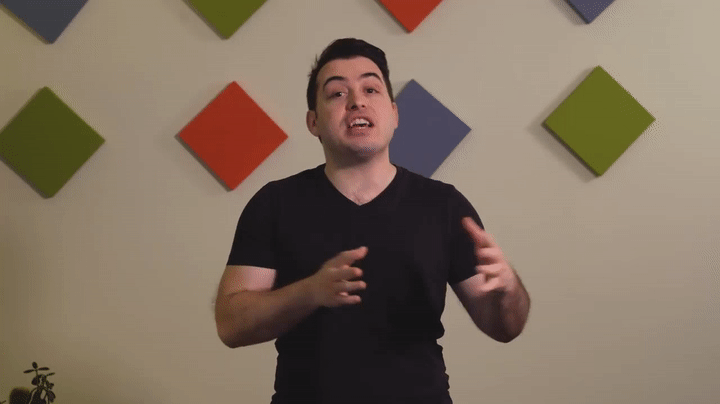
Just like counting, whenever you’re contrasting different ideas, use your hands to show it. This is a powerful persuasion technique.
“This and that.”
“Here and there.”
“Big and small.”
You get the idea…
The Backhand Slap (“Listen Up! This is very important.”)
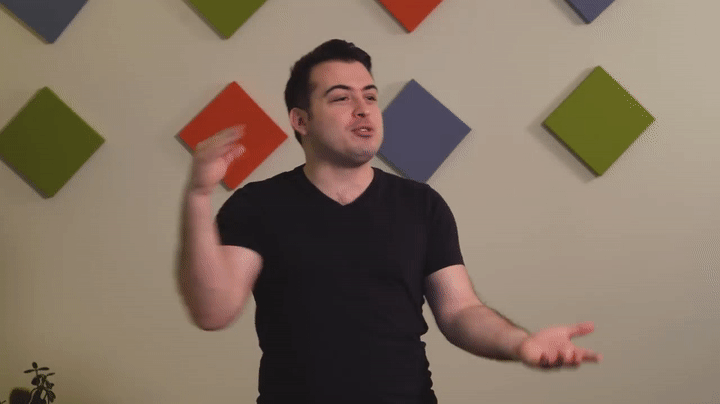
I love the backhand slap to make important points.
It adds conviction when you lay down the facts.
Pinched Thumb & Index (“Exactly.”)
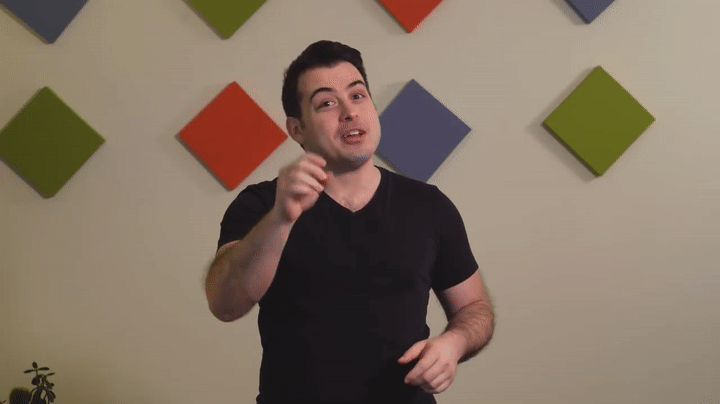
When you agree or want to say “Okay” you can use the pinched thumb & index finger gesture. It says, “Yes, that’s exactly what I mean.”
Use this when you agree with the person you’re talking to.
Open Arms (“I Have Nothing to Hide”)
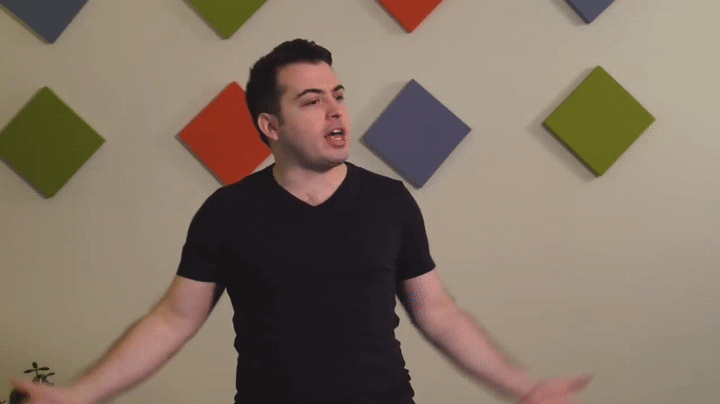
Remember how open palms communicate honesty.
The same is true for this open arms pose.
It communicates a sense of vulnerability.
The Facepalm (“I can’t believe this sh*t!”)

If you can’t believe what you just heard…
Use the facepalm to emphasize just how baffled you really are!
Hands Up (“It wasn’t me”)
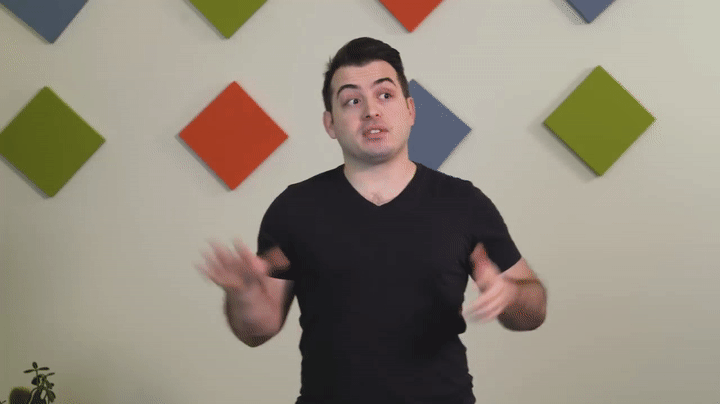
When you break something at a souvenir store, just put your hands up like this and say, “I didn’t touch it.” 😉
The Steeple (“I’m in charge.”)
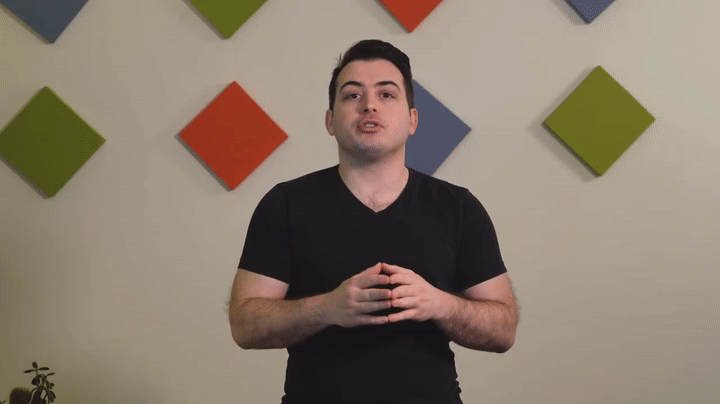
If you want to look wise and powerful, use the steeple:
Just put the tips of your fingers together.
However, it’s one of those power-moves you should use carefully.
If you do this in a way that’s too obvious… it just looks like you’re trying too hard.
Reverse (or lowered) Steeple (“I’ve got it under control”)
The same goes for the reverse steeple:
This is when you hold your hands in the steeple, but lower. And instead of your fingers pointing up, they point more forward.
It’s a bit more subtle. So, if you’re going to use this consciously, I’d recommend it over the normal steeple.
Fist Pump (“We can do this!”)
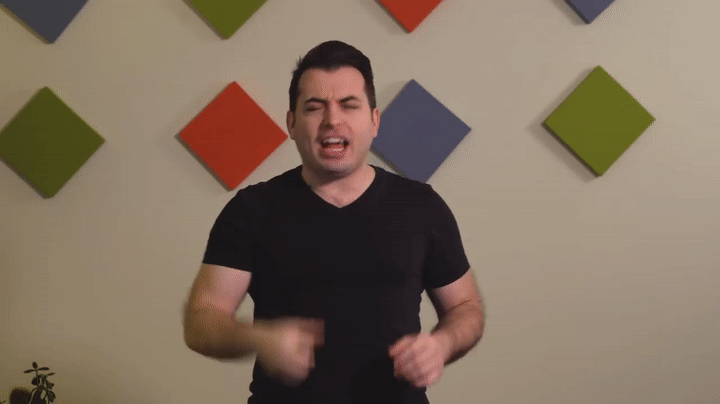
Use the fist pump to emphasize strength, encouragement, and intensity.
Athletes often use the fist pump when they score or make a good play.
So, it communicates success.
Air Quotes (“I’m being sarcastic”)
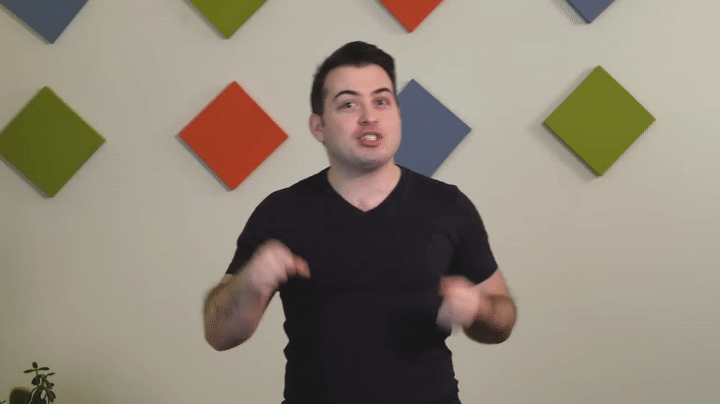
There are 3 reason to use “air quotes” when you talk:
- Sarcasm, Irony
- Euphemisms
- Slang
The Clinton Thumb (“Let’s work together”)
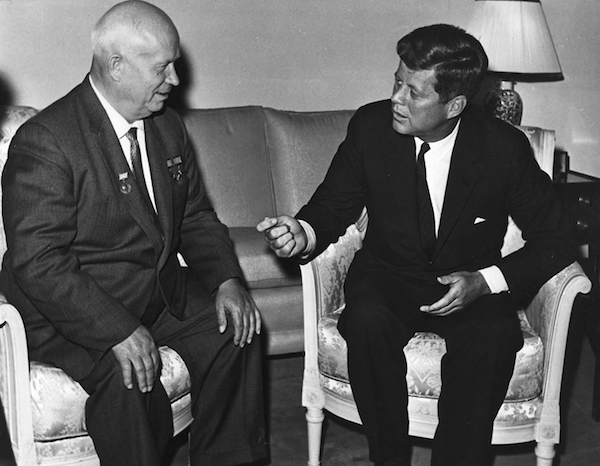
Kennedy, Khrushchev, 1961
This is a great gesture you can use in a one-on-one conversation. It’s known as the Clinton Thumb, but John F. Kennedy was famous first for using this.
An emphatic, it does not exhibit the anger of the clenched fist or pointing finger, and so is thought to be less threatening.[13] This gesture was likely adopted by Clinton from John F. Kennedy, who can be seen using it in many speeches and images from his political career.
The Karate Chop (“This is how it’s gonna be!”)
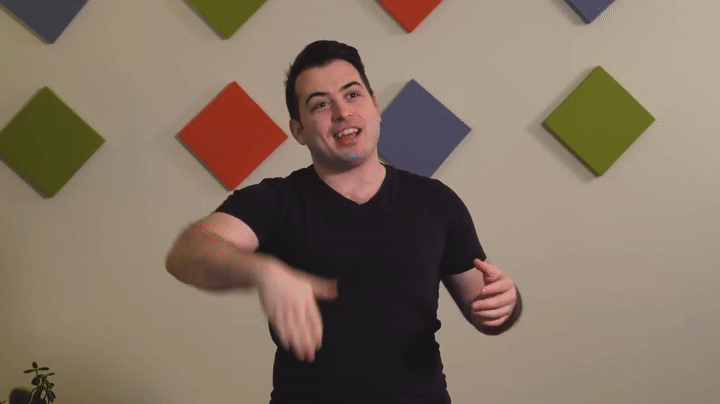
The Karate Chop should be your go-to move for your strongest points.
As to say, “This is how it’s going to be – and no other way.”
Rubbing hands together (“Oh this will be good!”)
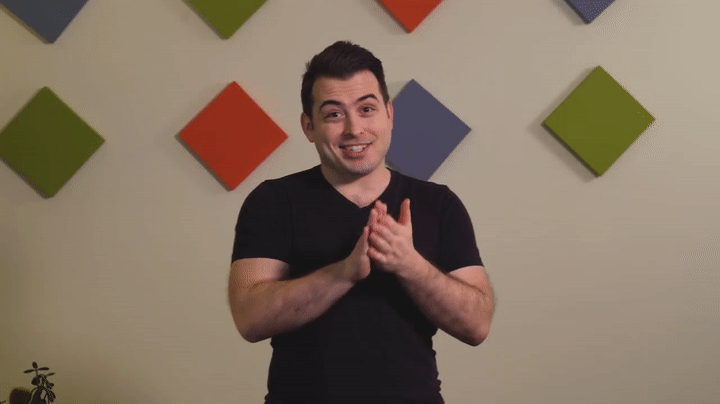
Rubbing your hands together shows excitement and anticipation. Can you tell? 🙂
Pointing Hand for Emphasis (“Let Me Tell You”)
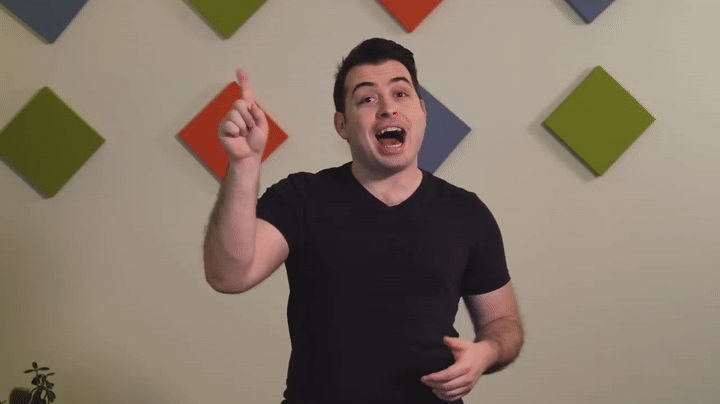
People don’t like being lectured. But sometimes you need to use the pointing hand for emphasis.
Hands on Heart (“I Really Mean It”)

I already mentioned this above, because it’s such a universal gesture:
Touching your heart means: “I’m sincere” or “I really mean it.”
The Brain Tap (“Remember This!”)
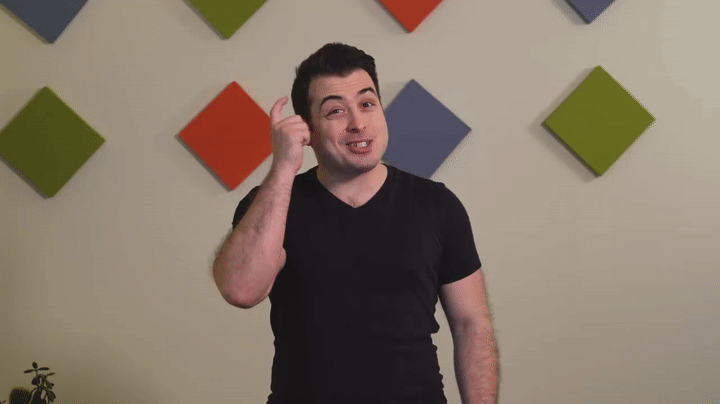
Tapping your brain is the hand-gesture you can use to say, “think about it.”
Stop (“Stop it!”)
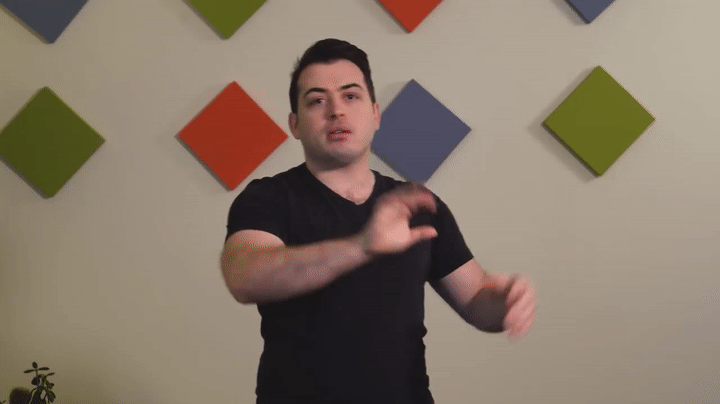
The “Stop!” gesture is another obvious one.
It adds great impact to your communication when you want to say
No! Stop. Wait. Hold on.
It’s an instant attention-grabber.
Don’t overuse it.
You want to make sure what comes after is important.
The Shrug (“Whatever, man!”)
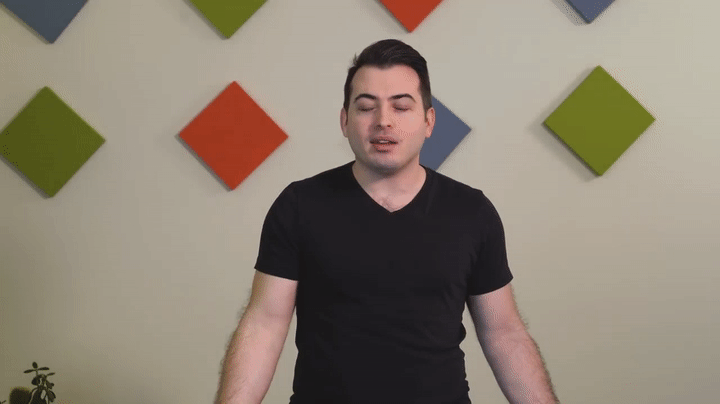
When you don’t know – or just don’t care – the shrug is your go-to move.
Finger to Chin (“Let me think about it.”)
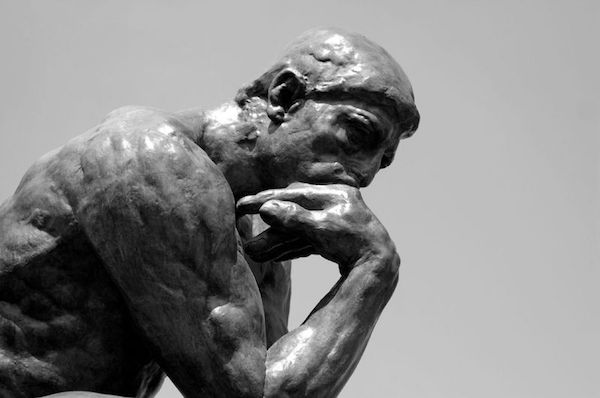
Need some time to think.
You can emphasize this by assuming a thinking pose. Like this one, by putting your finger to your chin and looking up slightly.
Raised Finger (“I have an idea!”)
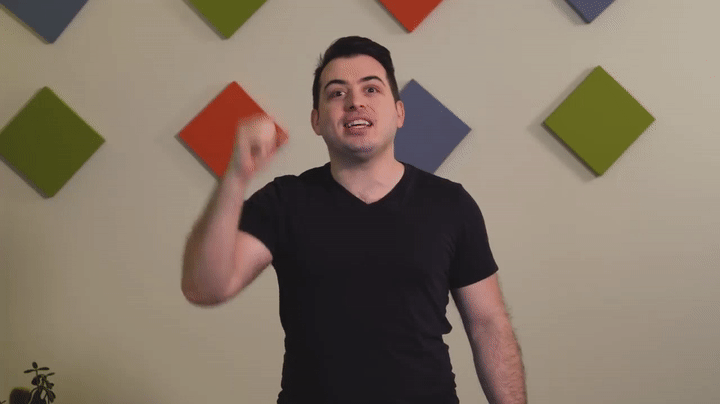
Hehe, I love this. It says, “listen up, I just had an idea!”
This is great for communicating your big aha-moments. Or when you say, “Oh, NOW I understand!”
Clenched Fists (“I’m feeling uneasy”)
This last gesture is one you should probably avoid:
Clenching your fists.
It’s not natural. It looks uncomfortable. So, it screams “I’m feeling uneasy.”
How to Use Hand Gesture When You Speak or Present
As we’ve seen, gestures say a lot about you.
And they help you communicate better.
What does this mean for you when you’re giving a speech or making a presentation?
Well, here are the best tips on how to use gestures as a public speaker…
First, remember that gestures ENHANCE what you say. They don’t replace what you say!
That’s why whenever you’re preparing a presentation, your message should be your priority.
First, figure out WHAT you want to say.
Then decided HOW to say it.
Then practice presenting.
With that said…
The most successful presenters use gestures to get their message across.
It could be on a big stage at a conference. At your sisters wedding. Or in a meeting at work. Carol Kinsey Goman, author of The Silent Language of Leaders says:
“You instinctively feel that when someone is more passionate, their gestures automatically become more animated and they look more enthusiastic.”
Remember, when you present, you’re on stage. It’s a performance. So, slightly exaggerated gestures are okay.
Here’s a practical tip I learned from the speaking coaches at Magnetic Speaking:
Practice exaggerated gesturing in private. Then, when it’s performance time, let go and be authentic.
If you practice enough, by the time you speak in public, your gestures will come out natural.
Plus…
When you’re well-prepared, there’s no need to overcompensate anyway.
In fact, it’s not about making MORE gestures. Instead, try to…
Make your gestures intentional.
In other words, your big gestures should have a purpose.
Gina Barnett, an executive communications coach who’s worked with TED conference speakers, says:
“When you do anything in a repetitive pattern, [the audience] is gone. It’s boring.”
Here are some suggestions:
- Count with your fingers when you’re listing things (it helps people follow along)
- Use contrast in your gestures (e.g. move your hands from left to right when comparing things; indicate “big” or “small”)
- Emphasize the most important points with a “backhand slap,” or a “Karate chop” (don’t overuse it – these points should really stick out)
Go through the list of gestures again and find the best ones to use.
However, experts agree…
There are a few no-no’s:
- Don’t point – it’s too aggressive (and audiences hate it)
- Don’t put your hands in front of your groin area (when you’re not gesturing, just keep your hands to the side of your body)
- Don’t repeat the same gesture over and over. Mix it up or you’ll risk losing your audience
- Don’t hold stuff in your hands
- Don’t hide your hands if you’re behind a reading stand.
The most important thing to keep in mind is that your gestures need to MATCH what you say…
For example, here’s what NOT to do:
Let’s say there’s a Q&A at the end of your talk.
So, you ask the audience:
“I’m open for question. Anyone?”
…but you’re standing there with your arms crossed.
You see the problem, right? You’re asking for questions, but your gesture says “Don’t talk to me!” If you want to build trust, use OPEN gestures.
Then, here’s what I do before my big speeches:
I write my speech.
I prepare my slides.
I practice.
Then, I film myself presenting.
(I don’t do it anymore. I still practice, but I’ve given dozens of keynote presentations. So, I have my go-to gestures now.)
Remember, you’re probably not aware of some of the hand gestures you’re making.
The only way to become aware of it is to film yourself.
Or get feedback from someone who knows what they’re talking about.
Finally…
A quick warning: Different gestures can mean different things in different places!
Warning: Some Hand Gestures Have Different Meanings in Different Places
Before you start using any hand gesture, be aware that some gestures have different meanings in different places.
For example…
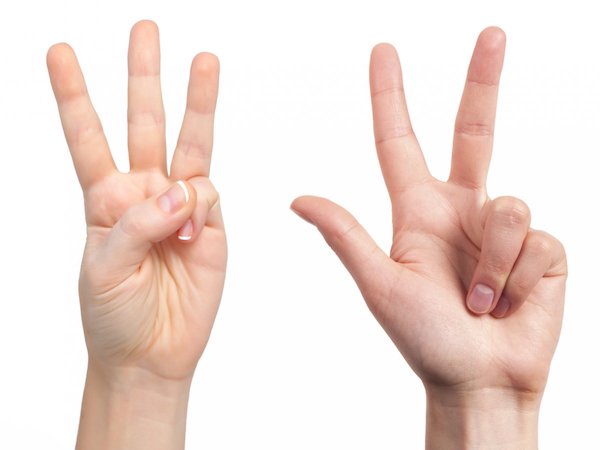
English speaking countries usually count with the index finger as the first digit. Many European countries start counting with the thumb as the first digit.
But it can get even more problematic (or offensive) than that.
Buzzfeed has a great, short video on this:
My advice?
If you’re in a place where you’re not familiar, double-check on the meaning of the most common gestures.
Now…
You’ve got everything you need. Go ahead and start using your hands when you talk!
It will help you make people listen and get your point across.








Great information you guys shared with great tool
Thanks for explaining everything EL HOMBRE, It adds up to my underpinning knowledge that gestures really meant something. Guess I’d be applying it the next time I’m on my speaking engagement.
Great article and great tools too thanks for sharing this with details
I don’t get it… on your About page you are saying that you have built a few wildly popular websites that have over million daily page views. But there is no word or links to your sites that you have build. Can you show a few samples of your most popular websites?